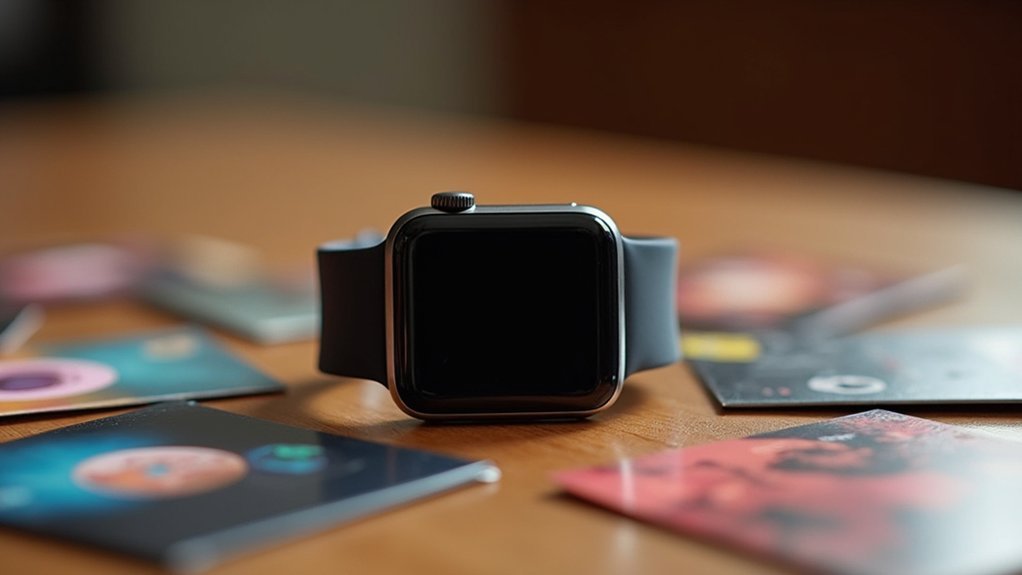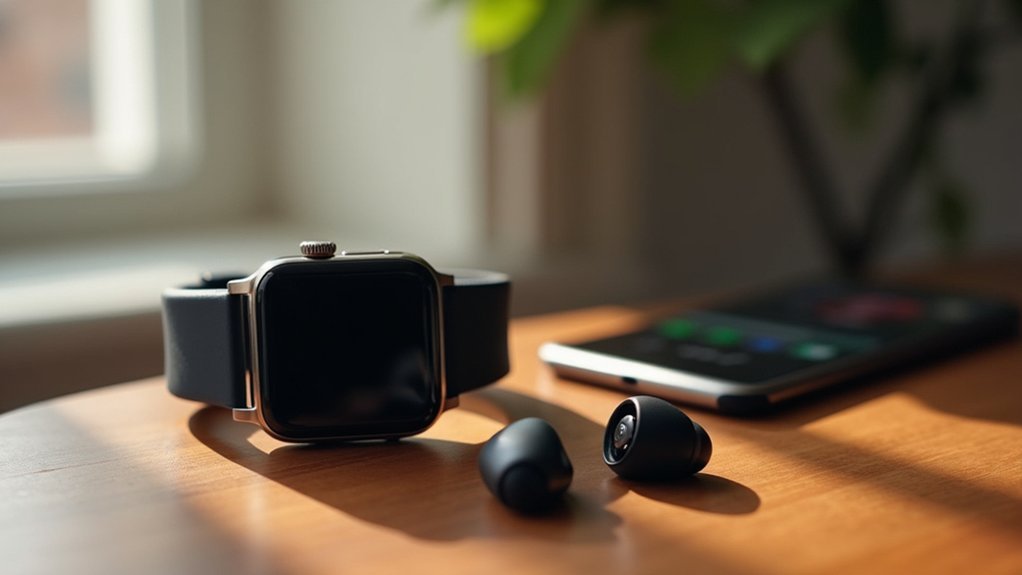When choosing a heart rate monitor, first identify your specific needs based on your activities—swimmers need waterproof devices while runners might prioritize GPS capability. Next, consider sensor accuracy—chest straps offer medical-grade precision (98% correlation) while wrist monitors work well for casual users. Finally, evaluate battery life and connectivity options to guarantee compatibility with your existing devices and workout duration. The right monitor transforms random workouts into data-driven progress.
Identify Your Heart Rate Monitoring Needs

Why invest in a heart rate monitor without first understanding what you truly need?
Consider the activities you regularly engage in—runners and cyclists might need GPS capabilities and real-time feedback, while swimmers require waterproof designs. High-intensity training demands accurate, instant readings for performance optimization, whereas casual fitness enthusiasts may only need basic BPM tracking.
Match your heart rate monitor to your activity—GPS for runners, waterproof for swimmers, precision for HIIT, simplicity for casual fitness.
Your data preferences matter too. If you’re analyzing training effectiveness, look for monitors that track HRV, recovery metrics, and VO2 max. If you’re simply monitoring general exertion, basic models will suffice.
Think about where and how you’ll use the device—outdoors vs. indoors, solo workouts vs. group classes. Also consider connectivity requirements with existing devices like smartphones, watches, or gym equipment. For the most precise heart rate measurements during intense exercise, consider models with chest-strap HRMs which consistently provide superior accuracy compared to wrist-based options.
Compare Accuracy Across Different Sensor Types
When it comes to heart rate monitoring, not all sensors deliver the same level of precision. Chest straps like the Polar H7 and H10 offer exceptional accuracy with correlation coefficients of 0.98 compared to medical ECG equipment. They maintain this precision across all exercise intensities.
Optical wrist sensors (found in smartwatches) perform well at rest with correlation values around 0.85, but their accuracy drops during intense activities, sometimes falling below 0.70 when running fast. The Apple Watch III leads among wrist devices with a 0.96 correlation.
Your physical characteristics matter too. BMI and darker skin tones can affect optical sensor accuracy, while proper positioning is essential for both types. The Garmin HRM Pro Plus offers advanced metrics and onboard memory for serious athletes requiring detailed performance data.
For medical or serious athletic purposes, chest straps remain the gold standard despite the convenience of wrist options.
Evaluate Battery Life and Connectivity Options

Heart rate monitor performance depends considerably on battery life and connectivity options, two critical factors that determine how well the device serves your needs.
Consider whether you prefer the convenience of rechargeable models like the Wahoo Trackr (100 hours per charge) or the longevity of coin cell batteries found in devices like the Garmin HRM Dual (3.5 years with daily use).
For connectivity, look for devices offering both Bluetooth and ANT+ protocols to guarantee compatibility with your smartphone, fitness equipment, and cycling computers. This dual connectivity gives you flexibility across different platforms.
If you’re planning multi-day activities without charging access, prioritize models with extended battery life. Remember that rechargeable units often provide better waterproofing for sweat-heavy workouts, though you’ll need to keep track of proprietary charging cables.
Battery life varies significantly between models, with premium options like the Polar H10 offering up to 400 hours of performance before requiring a battery change.
Frequently Asked Questions
Can I Use Heart Rate Monitors While Swimming Underwater?
Yes, you can use heart rate monitors while swimming underwater, but you’ll need specifically waterproof models designed for swimming with appropriate depth ratings. Look for swim-specific features like secure straps that won’t slip during your strokes.
How Tight Should I Wear My Chest Strap or Wristband?
Wear your chest strap snug enough to prevent movement but not restrict breathing, positioned just below your sternum. For wristbands, make certain they’re tight enough for continuous skin contact without constricting blood flow.
Do Medications Affect Heart Rate Monitor Readings?
Yes, medications can affect your heart rate monitor readings. When you take drugs that change your heart rhythm or rate, like ADHD stimulants or diuretics, your device may produce less accurate measurements.
Can Heart Rate Monitors Detect Irregular Heartbeats or Arrhythmias?
Yes, many heart rate monitors can detect arrhythmias, but with varying accuracy. You’ll get better results from devices with ECG capabilities, though they’re not as reliable as medical-grade equipment for all types of irregular heartbeats.
How Often Should I Clean My Heart Rate Monitor?
Rinse your heart rate monitor after each use to remove sweat. You should perform a deep clean every 5-7 workouts, following your specific manufacturer’s guidelines. Don’t use harsh chemicals and always air dry completely.
In Summary
When you’re ready to purchase a heart rate monitor, you’ll make a better choice by first clarifying your specific fitness goals. Don’t overlook the importance of sensor accuracy—chest straps typically offer more precision than wrist-based options. Finally, consider how long the battery lasts and whether you need smartphone connectivity. By weighing these three factors, you’ll find a monitor that seamlessly integrates with your active lifestyle.





Leave a Reply